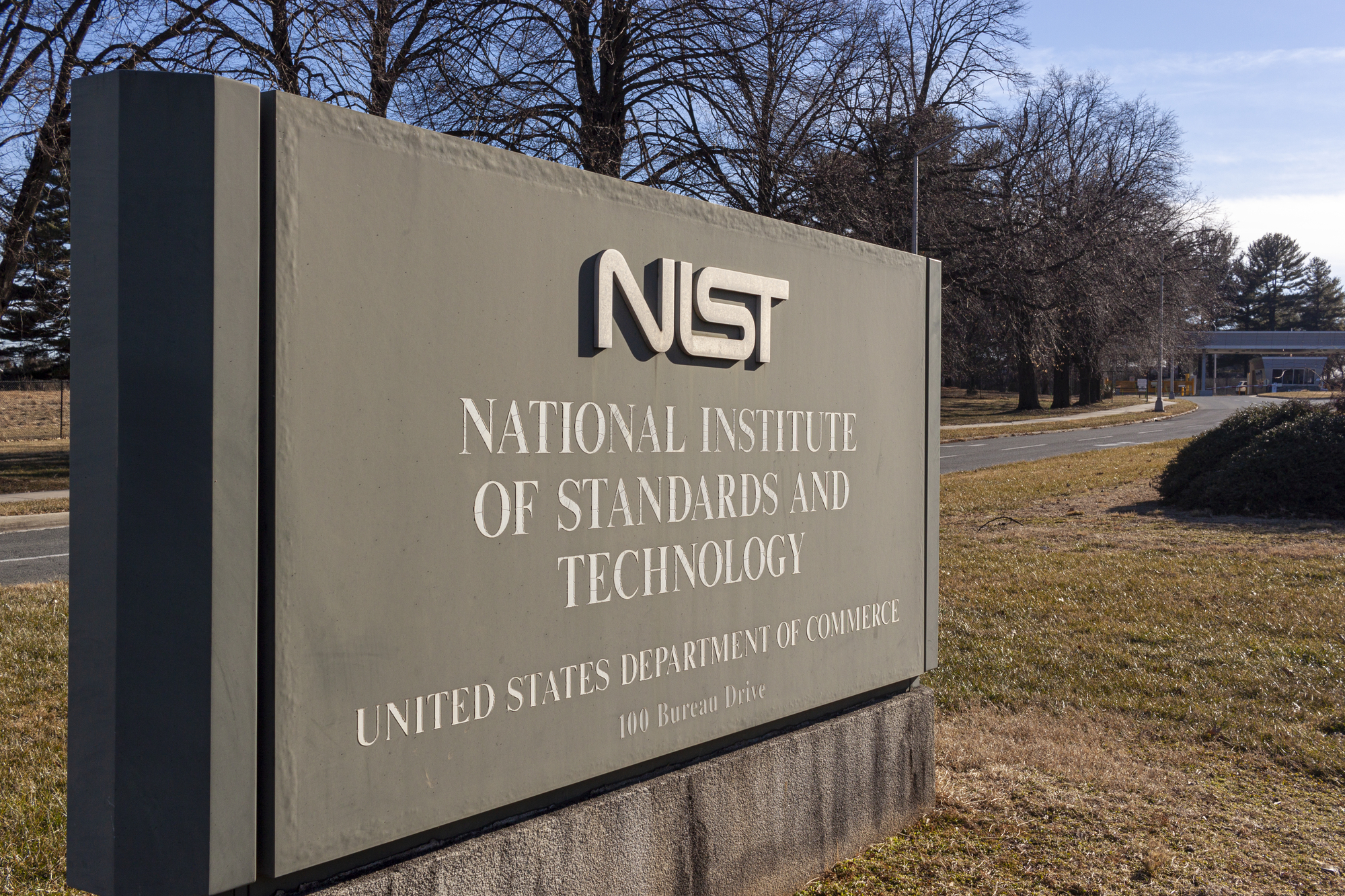NIST 800-171 compliance, also known as the National Institute of Standards and Technology Special Publication 800-171 compliance, refers to the set of security requirements that must be met by organizations handling sensitive data related to United States federal agencies. It ensures the implementation of proper safeguards to protect this sensitive information against unauthorized access and potential cyber threats.
Cybersecurity has become one of the most important issues for business, especially for government contractors working with the Department of Defense (DoD). The DoD requires its contractors to meet certain cybersecurity standards to protect sensitive government information from cyber threats. One of the key guidelines for cybersecurity compliance is the National Institute of Standards and Technology (NIST) Special Publication (SP) 800-171. This article will delve into the significance of NIST SP 800-171 compliance and how it can help government agencies and contractors safeguard their systems and data from cyber threats.
Complying with NIST SP 800-171 guidelines is mandatory for DoD contractors to protect sensitive information. Understanding the differences between DFARS and NIST SP 800-171, as well as the benefits of compliance and the penalties of non-compliance, is crucial.”
As cyber attacks continue to grow in sophistication and frequency, the need for robust cybersecurity measures has become more pressing than ever before. The DoD recognizes the importance of securing its sensitive data and has mandated that all its contractors comply with NIST SP 800-171 guidelines. Failure to comply with these guidelines can result in severe consequences, including loss of contracts, fines, and reputational damage.
What’s the purpose of NIST SP 800-171 Compliance?
NIST SP 800-171 provides a framework for protecting Controlled Unclassified Information (CUI) in non-federal information systems and organizations. CUI refers to information that is not classified but still requires safeguarding due to its sensitivity, such as personally identifiable information (PII) or sensitive government information. The guidelines outlined in NIST SP 800-171 are designed to help government contractors protect CUI in their information systems and meet the security procedures mandated by the DoD.
NIST SP 800-171 was first published in 2015 and has since become the de facto standard for cybersecurity compliance in the defense industry. The guidelines provide a set of security requirements and controls that contractors must implement to ensure the confidentiality, integrity, and availability of CUI. These requirements cover a wide range of cybersecurity topics, including access control, incident response, risk assessment, and system and system security plan.
The ultimate goal of NIST SP 800-171 is to help contractors establish a strong foundation for cybersecurity and protect sensitive government information from cyber threats. Compliance with these guidelines is mandatory for all defense contractors that access CUI, regardless of their size or the nature of their work. The requirements are also designed to be scalable, allowing contractors to tailor their cybersecurity measures to the size and complexity of their organization.
Compliance with NIST SP 800-171 not only helps contractors meet the DoD’s cybersecurity requirements, but it also provides a number of other benefits. For example, compliance can help contractors establish a strong reputation for cybersecurity excellence, which can be a competitive advantage when bidding for DoD contracts. Additionally, NIST compliance can help contractors avoid costly data breaches and the associated legal, financial, and reputational damage.
The Differences Between DFARS and NIST 800-171
DFARS (Defense Federal Acquisition Regulation Supplement) and NIST SP 800-171 are both sets of cybersecurity guidelines that apply to DoD contractors. However, there are some key differences between the two.
DFARS is a set of regulations that apply to all DoD contractors and subcontractors, regardless of whether or not they handle controlled unclassified information (CUI). The regulations cover a wide range of topics, including data breach reporting, security incidents, cybersecurity incident reporting, and controls for covered defense information (CDI). DFARS also requires contractors to comply with NIST SP 800-171 guidelines as a minimum cybersecurity standard for protecting CDI.
On the other hand, NIST SP 800-171 is a set of guidelines specifically designed to protect CUI in non-federal information systems and organizations. The guidelines provide a framework for protecting CUI from unauthorized data access, disclosure, and destruction. Compliance with NIST SP 800-171 is mandatory for all DoD contractors that handle CUI and includes a set of security requirements and controls that must be implemented.
One of the main differences between DFARS and NIST SP 800-171 is their scope. DFARS applies to all DoD contractors, while NIST SP 800-171 applies only to those that handle CUI. Additionally, while DFARS covers a broader range of cybersecurity topics, NIST SP 800-171 is more focused on protecting CUI specifically.
Another difference between the two is the level of detail provided in the guidelines. DFARS provides a set of high-level regulations, while NIST SP 800-171 provides a more detailed framework for protecting CUI. This level of detail makes NIST SP 800-171 a more comprehensive and specific set of guidelines for protecting CUI.
DFARS and NIST SP 800-171 are both important cybersecurity guidelines for DoD contractors, but they have different scopes and levels of detail. DFARS applies to all DoD contractors and covers a broad range of cybersecurity topics, while NIST SP 800-171 specifically focuses on protecting CUI and provides a more detailed framework for doing so.
Why DoD Contractors Need to Comply with NIST 800-171
DoD (Department of Defense) contractors must comply with NIST 800-171 guidelines because it is mandated by the DoD to protect Controlled Unclassified Information (CUI) if they want to keep existing federal contracts and win new ones. CUI refers to sensitive, unclassified information that requires safeguarding from unauthorized disclosure or access. This information could include personally identifiable information (PII), export control information, intellectual property, and federal government contracts .
Compliance with NIST 800-171 is a mandatory requirement for non federal agencies and organizations that handle CUI so they can protect sensitive data. Failure to comply with these guidelines can result in severe consequences, including the loss of contracts, fines, and reputational damage. Compliance with these guidelines is also essential for maintaining a competitive edge in the defense industry, as DoD contracts are typically awarded to companies that can demonstrate robust cybersecurity measures.
Additionally, compliance with NIST 800-171 is essential to safeguard CUI from cyber threats. The guidelines provide a comprehensive framework for safeguarding information systems and include a set of security requirements and controls that must be implemented. Compliance with these requirements helps contractors establish a strong foundation for cybersecurity, which is critical in today’s digital age where cyber attacks continue to grow in frequency and sophistication.
Compliance with NIST 800-171 is essential for protecting national security. Non federal organizations often handle sensitive government information that, if compromised, could have far-reaching consequences for national security. Compliance with these guidelines helps ensure that this information is protected from cyber threats, helping to safeguard our nation’s security and interests.
NIST 800-171 compliance is essential for DoD contractors that handle CUI. Compliance helps protect sensitive information from cyber threats, ensures that contractors meet DoD cybersecurity requirements, and helps maintain a competitive edge in the defense industry. Compliance with these guidelines is essential for safeguarding national security and protecting our nation’s interests.
What to Do if There’s a Data Breach

If a DoD contractor experiences a data breach, they should take immediate action to mitigate the damage and comply with regulatory requirements. Here are the steps that contractors should follow in the event of a data breach:
- Contain the Breach: The first step is to contain the breach to prevent further damage. This may involve disconnecting affected systems from the network, disabling user accounts, or shutting down affected systems.
- Assess the Damage: The next step is to assess the extent of the damage. Contractors should determine what data has been compromised, who has been affected, and how the breach occurred.
- Notify the your prime contractor or the DOD: Report the breach to the DoD as soon as possible. The contractor should report the incident to the contracting officer and the Defense Industrial Base Cybersecurity Information Sharing Program (DIB CS).
- Notify Affected Individuals: If the breach involves the compromise of personal information, the contractor must notify affected individuals as soon as possible.
- Investigate the Root Cause: Contractors should investigate the root cause of the breach and implement measures to prevent similar incidents from occurring in the future.
- Implement Corrective Actions: Contractors should implement corrective actions to address any vulnerabilities that contributed to the breach.
- Provide a Breach Report: The contractor should provide a comprehensive breach report to the DoD, including details on the breach, the impact, the corrective actions taken, and the steps taken to prevent similar incidents from occurring in the future.
In the event of a data breach, you should take immediate action to contain the breach, assess the damage, notify the DoD and affected individuals, investigate the root cause, implement actions correct system flaws, and provide a comprehensive breach report to the DoD. Compliance with these steps is essential for minimizing the damage caused by a breach and maintaining the security of sensitive government information.
What Are the Penalties for Non-compliance
Not complying with DFARS (Defense Federal Acquisition Regulation Supplement) compliance can result in significant penalties for contractors. DFARS compliance is mandatory for all contractors that work with the DoD, and failure to comply can result in the loss of contracts, financial penalties, and reputational damage. Here are some of the penalties that contractors may face for non-compliance:
- Contract Termination: The most severe penalty for with DFARS compliance is the termination of the contract. The DoD may terminate a contract if a contractor fails to comply with the DFARS compliance requirements.
- Suspension of Payment: The DoD may suspend payment to a contractor if it fails to comply with DFARS requirements. This can result in financial losses for the contractor.
- Fines: Contractors that fail to comply with DFARS requirements may be subject to fines. The fines can range from a few thousand dollars to millions of dollars, depending on the severity of the violation.
- Reputational Damage: Non-compliance with DFARS requirements can result in reputational damage for a contractor. This can make it difficult for the contractor to secure future contracts with the DoD.
- Legal Liability: In some cases, non-compliance with DFARS requirements or applicable laws may result in legal liability for the contractor. For example, if a contractor fails to report a data breach as required by DFARS, it may face legal action from the DoD or affected individuals.
Non-compliance with DFARS requirements can result in severe penalties. These penalties can include contract termination, suspension of payment, fines, reputational damage, and legal liability. Compliance with DFARS requirements is essential for maintaining a good standing with the DoD and protecting sensitive government information.
The importance and benefits of complying with NIST 800-171
Complying with NIST 800-171 is important for organizations that handle Controlled Unclassified Information (CUI), especially if they have contracts with the Department of Defense (DoD). CUI is information that is not classified but still requires safeguarding due to its sensitivity, such as personally identifiable information (PII) or sensitive government information. Here are some reasons why complying with NIST 800-171 is important:
- Protecting Sensitive Information: Compliance with NIST 800-171 helps protect sensitive government information from cyber threats. By implementing the required cybersecurity controls and measures, organizations can safeguard CUI from theft, destruction, or unauthorized access.
- Compliance with Contract Requirements: Many DoD contracts require compliance with NIST 800-171 as a condition of the contract. Complying with these requirements helps organizations maintain good standing with the DoD and ensures that they are eligible for future contracts.
- Avoiding Penalties: Non-compliance with NIST 800-171 requirements can result in penalties such as contract termination, suspension of payment, fines, reputational damage, and legal liability. Complying with these requirements can help organizations avoid these penalties.
- Enhancing Cybersecurity: Complying with NIST 800-171 requirements can help organizations enhance their cybersecurity measures. By implementing the required cybersecurity practices and measures, organizations can reduce the risk of cyber attacks and data breaches and helps to fulfill security responsibilities.
- Competitive Advantage: Complying with NIST 800-171 requirements can also give organizations a competitive advantage in the DoD contracting space. By demonstrating a strong commitment to cybersecurity, organizations can position themselves as trustworthy and reliable partners for the DoD.
Complying with NIST 800-171 is important for protecting sensitive information, complying with contract requirements, avoiding penalties, enhancing cybersecurity, using compliance assessments and gaining a competitive advantage. By implementing the required cybersecurity measures and controls, organizations can safeguard from cyber threats and maintain good standing with the DoD.
Is Your Organization Audit Ready for NIST 800-171?
Knowing if your organization is audit-ready for an NIST assessment of 800-171 compliance requires a thorough assessment of your cybersecurity measures. Here are some key steps that you can take to determine if your organization is able to demonstrate compliance:
- Review the NIST 800-171 Guidelines: The first step is to review the NIST 800-171 guidelines and familiarize yourself with the security requirements and controls that must be implemented. This will give you an understanding of the scope of the compliance requirements and help you assess your organization’s readiness.
- Conduct a Gap Analysis: Conduct a gap analysis to identify any areas where your organization’s cybersecurity measures fall short of the NIST 800-171 requirements. This will help you identify areas where you need to improve your cybersecurity measures and make your organization audit-ready.
- Implement Necessary Changes: Based on the results of the gap analysis, you should implement necessary changes to your cybersecurity measures to meet the NIST 800-171 requirements. This may involve implementing new security controls, physical protection, updating policies and procedures, updating incident response plans, or enhancing your security awareness training program.
- Test and Validate Controls: Once you have implemented the necessary changes, you should test and validate your security controls to ensure that they are meet the minimum security requirements. This may involve conducting penetration testing or vulnerability assessments to identify any security risks that need to be addressed.
- Document Your Compliance: Finally, you should document your compliance with the NIST 800-171 guidelines. This includes maintaining detailed records of your cybersecurity measures, conducting regular risk assessments, and keeping track of any incidents or breaches that occur.
Knowing if your organization is able to achieve full compliance with NIST 800-171 compliance requires a thorough assessment of your cybersecurity measures. This includes reviewing the NIST 800-171 guidelines, conducting a gap analysis, implementing necessary changes, testing and validating controls, and documenting your compliance efforts. By taking these steps, you can ensure that your organization is prepared for a NIST 800-171 compliance audit and is effectively protecting sensitive government information from cyber threats.
Key Assumptions For NIST 800-171 That Impact Scoping
Tjhere are the key assumptions for NIST 800-171 that impact scoping:
- Controlled Unclassified Information (CUI) is being processed, stored, or transmitted by the organization.
- The organization has contracts with the Department of Defense (DoD) that require compliance with NIST 800-171.
- The organization protects CUI’s confidentiality, integrity, and availability.
- The organization has implemented or plans to implement a Risk Management Framework (RMF) to assess and manage cybersecurity risks.
- The organization has identified and documented the information systems that process, store, or transmit CUI.
- The organization has assessed the impact of a cybersecurity incident on the confidentiality, integrity, and availability of CUI.
- The organization has implemented or plans to implement the required CUI security requirements and measures to protect CUI from cyber threats.
- The organization has developed and implemented policies and procedures to support compliance with NIST 800-171 requirements.
- The organization has implemented or plans to implement a security awareness training program to educate employees on cybersecurity best practices.
- The organization has developed and implemented a response plan to address cybersecurity incidents that may affect CUI.
The key assumptions for NIST 800-171 that impact scoping involve the organization’s responsibility for protecting CUI, its compliance with DoD contracts, its implementation of RMF, identification of information systems that process, store, or transmit CUI, assessment of the impact of a serious cybersecurity event or incident, implementation of required security controls and measures, development of policies and procedures, implementation of a security awareness training program, and development of an incident response plan, monitor user installed software and external network connections. Understanding these assumptions is critical for effectively scoping NIST 800-171 compliance efforts.
Understanding NIST 800-171 Controls
NIST (National Institute of Standards and Technology) 800-171 controls are cybersecurity requirements and controls that DoD contractors must implement to protect Controlled Unclassified Information (CUI). CUI is not classified information but still requires safeguarding due to its sensitivity, such as personally identifiable information (PII) or sensitive government information. Here are some examples of NIST 800-171 controls that could be communicated to an employee:
- Access Control: Employees should be trained to control access to sensitive information by limiting access to authorized personnel only. This includes ensuring that strong passwords are used, limiting the number of failed login attempts, and disabling accounts that are no longer in use.
- Incident Response: Employees should be trained to respond to cybersecurity incidents, including reporting incidents promptly, containing the incident, and implementing measures to prevent similar incidents from occurring in the future.
- Security Awareness Training: Employees should be trained on cybersecurity best practices, including identifying phishing emails, avoiding downloading malicious software, and recognizing social engineering tactics.
- Risk Assessment: Employees should be trained on conducting risk assessments to identify potential vulnerabilities in the organization’s cybersecurity measures. This includes identifying risks associated with employees, technology, and processes.
- Physical Security: Employees should be trained to ensure that physical access to sensitive information is limited to authorized personnel only. This includes ensuring that information is stored securely and that unauthorized physical access to the information is monitored.
- System and Communications Protection: Employees should be trained to protect systems and communications from cyber threats. This includes implementing firewalls, encryption, and malware protection.
In summary, NIST 800-171 controls are a set of security requirements and controls that Defense contractors must implement to protect CUI. These controls can be communicated to employees through training on access control, incident response, security awareness, risk assessment, personnel security, physical security, and system and communications protection. Ensuring that employees are aware of these controls and understand their role in implementing them is critical in protecting sensitive government information from cyber threats.
Quick review: What is NIST 800-171?
Does Your Organization Need to Be NIST 800-171 Compliant?
Determining if your organization needs to be NIST (National Institute of Standards and Technology) 800-171 compliant requires an assessment of whether the organization handles Controlled Unclassified Information (CUI) and has contracts with the Department of Defense (DoD) or federal agency that mandate compliance with NIST 800-171. Here are some guidelines to help determine if an organization needs to be NIST 800-171 compliant:
- Determine if the organization handles CUI: The first step is to determine if the organization handles CUI. CUI is not classified information but still requires safeguarding due to its sensitivity, such as personally identifiable information (PII) or sensitive government information. If the organization handles CUI, it must be NIST 800-171 compliant.
- Review Contracts with the DoD: If the organization has contracts with the DoD, it should review the contracts to determine if compliance with NIST 800-171 is required. Many DoD contracts require compliance with NIST 800-171 as a condition of the contract.
- Review Subcontractor Requirements: If the organization is a subcontractor to a DoD contractor, it should review the prime contractor’s requirements for NIST 800-171 compliance. Many prime contractors require their subcontractors to be NIST 800-171 compliant.
- Determine the Scope of the Organization’s Work: If the organization handles CUI or has contracts with the DoD, it should determine the scope of its work. If the organization handles CUI or works on DoD contracts that involve the processing, storing, or transmitting of CUI, it likely needs to be NIST 800-171 compliant.
- Conduct a Risk Assessment: Finally, the organization should conduct a risk assessment to determine the potential impact of a cyber attack on its business operations and the security of CUI. This can help determine if NIST 800-171 compliance is necessary to mitigate the risk of a cyber attack.
Determining if an organization needs to be NIST 800-171 compliant requires an assessment of whether it handles CUI, has contracts with the DoD, and the scope of its work. If it handles CUI or has DoD contracts that involve the processing, storing, or transmitting of CUI, compliance with NIST 800-171 is likely required. Conducting a risk assessment can also help determine if NIST 800-171 compliance is necessary to mitigate the risk of a cyber attack.
How Does Trust Play a Role in NIST 800-171 Compliance for DoD Contractors?
Trust is essential for success when it comes to NIST 800-171 compliance for DoD contractors. Establishing a strong foundation of trust is crucial for contractors to adhere to the security guidelines set by NIST. Building trust with the Department of Defense ensures a smooth and transparent compliance process, allowing contractors to better protect sensitive government information and uphold national security.
Conducting a NIST 800-171 Self-Assessment
A NIST 800-171 self-assessment is essential in ensuring compliance with the security requirements and controls necessary to protect Controlled Unclassified Information (CUI). Here are the steps you should follow when conducting a NIST 800-171 self-assessment:
- Review the NIST 800-171 Guidelines: The first step is to review the NIST 800-171 guidelines and familiarize yourself with the security requirements and controls that must be implemented. This will give you an understanding of the scope of the compliance requirements and help you assess your organization’s readiness.
- Determine the Scope of the Assessment: Determine the scope of the assessment by identifying nonfederal information systems, processes, and people that handle or have access to CUI. This will help you focus your assessment efforts and ensure that you assess the relevant cybersecurity measures.
- Identify the Controls: Identify the specific controls that are applicable to your organization based on the scope of the assessment. This may include a strong cybersecurity program, access control, configuration management, security awareness, relevant security controls, physical security, and system and media protection.
- Conduct the Assessment: Conduct the security assessment by reviewing your organization toprovide security protection against the applicable controls. This may involve interviewing employees, reviewing policies and procedures, and examining technical controls.
- Document the Results: Document the assessment results, including any gaps or deficiencies in your cybersecurity measures. This will help you identify areas where you need to improve your cybersecurity measures and make your organization audit-ready.
- Develop an Action Plan: Develop an action plan to address any gaps or deficiencies identified in the assessment. This should include specific actions, timelines, and responsibilities for addressing the gaps.
- Implement Necessary Changes: Implement necessary changes to your cybersecurity measures based on the action plan. This may involve implementing new technical solutions, updating policies and procedures, or enhancing your security awareness training program.
- Re-assess: Reassess your cybersecurity measures to ensure the implemented changes are effectively addressed. You can enforce security configuration settings, and correct any gaps or deficiencies. This will help ensure that your organization is prepared for a NIST 800-171 compliance audit and is effectively protecting sensitive government information from cyber threats.
Conducting a NIST 800-171 self-assessment involves reviewing the guidelines, determining the scope of the assessment, identifying the controls, conducting the assessment, documenting the results, developing an action plan, implementing necessary changes, and re-assessing your cybersecurity measures. By following these steps, you can ensure that your organization is prepared to comply with NIST 800-171 and effectively protect sensitive government information from cyber threats.



